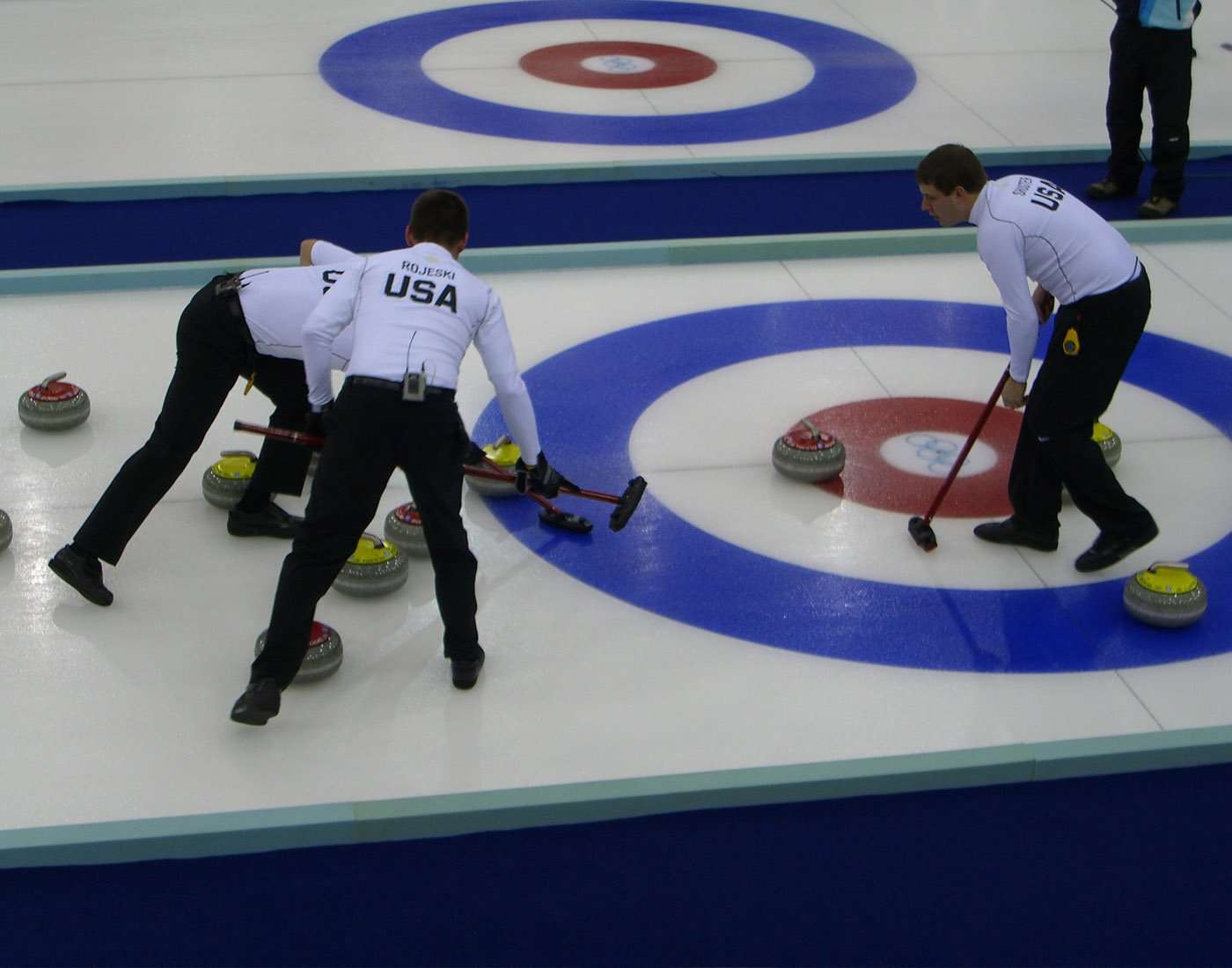Curling is a unique and captivating winter sport that has gained popularity not only in its home country, Canada, but also around the world. It is a team sport that involves sliding heavy granite stones on a sheet of ice towards a target area, while teammates use brooms to control the stone’s direction and speed. To the uninitiated, curling may seem like a simple and leisurely game, but it is governed by a set of rules that ensure fair play and competitive excitement. In this comprehensive guide, we will delve into the intricate details of curling rules, covering everything from the basics to advanced strategies.
The Basics of Curling
Team Composition
Curling is typically played by two teams, each consisting of four players. These players have specific roles on the team:
-
Lead: The lead player throws the first two stones for their team. They play a crucial role in setting the early strategy and placement of stones.
-
Second: The second player delivers the third and fourth stones for their team. They often play a pivotal role in building and maintaining the setup for their team.
-
Vice-Skip: The vice-skip, or third player, plays an important role in assisting the skip with strategic decisions and executing shots.
-
Skip: The skip is the team’s captain and typically delivers the final two stones. They are responsible for making strategic decisions and calling shots for their team.
Equipment
Curling involves several pieces of equipment:
-
Stones: Curling stones, also known as rocks, are made of granite and weigh approximately 42 pounds (19.1 kg). Each team has eight stones, and they are used to score points by coming closest to the target.
-
Brooms: Players use brooms to sweep the ice in front of the stone. Sweeping reduces friction and can influence the stone’s direction and speed.
-
Shoes: Curling shoes have one smooth sole and one grippy sole. The smooth sole is used for sliding on the ice, while the grippy sole provides traction.
-
Curling Ice: The playing surface is a rectangular sheet of ice, known as the curling sheet. It is typically about 150 feet (45 meters) long and 15 feet (4.5 meters) wide.
Objective
The objective of curling is to score points by getting your team’s stones closer to the center of the target area, known as the “house,” than the opponent’s stones. The team with the stone closest to the center of the house scores points.
Dive into the world of sports Wheelchair curling and Curling with expert insights, latest news, and tips for your fitness journey. Stay active and informed
Playing the Game
Scoring
Scoring in curling is determined at the end of each “end,” which is similar to an inning in baseball. An end is completed when all 16 stones have been delivered (eight stones per team). Points are awarded as follows:
- Only one team can score in an end.
- The team with the stone closest to the center of the house at the end of the end scores one point.
- Additional points are scored for each of the team’s stones that are closer to the center of the house than the opponent’s closest stone. For example, if a team has three stones closer to the center than the opponent’s closest stone, they score three points.
Hammer
The team that did not score in the previous end has the “hammer” in the next end. The hammer is a significant advantage in curling because it allows a team to have the final stone of the end. The team with the hammer can use it strategically to their advantage.
Strategy
Curling is not just about delivering stones accurately but also about employing strategic gameplay. Teams develop tactics and make decisions about where to place their stones, whether to play offensively or defensively, and how to create opportunities to score or prevent their opponent from scoring. The skip plays a vital role in devising these strategies and communicating them to the team.
Throwing the Stone
The curling stone must be delivered from the “hack,” which is a foothold at one end of the sheet. Players must release the stone before it reaches the “hog line,” which is located closer to the center of the sheet. The stone must also cross the “tee line” to be in play. If a stone fails to meet these requirements, it is removed from play.
Players can apply a spin to the stone during delivery, causing it to curl (hence the sport’s name) as it travels down the sheet. The direction and degree of curl are essential elements of strategy.
Sweeping
Sweeping is an integral part of curling. Teammates use brooms to sweep the ice in front of the stone as it travels down the sheet. Sweeping has several effects on the stone’s path:
-
Reduced Friction: Sweeping reduces friction between the stone and the ice, allowing it to travel farther and straighter.
-
Controlled Curl: Sweeping can make a stone curl less or more, depending on the desired outcome.
-
Speed: Sweeping can increase a stone’s speed, allowing it to reach a specific target more quickly.
Sweeping requires teamwork and communication between players. It is often the difference between a successful and unsuccessful shot.
Free Guard Zone Rule
Curling employs the “Free Guard Zone” (FGZ) rule, which adds an extra layer of strategy to the game. The rule stipulates that for the first four stones thrown in an end, no stones (other than the ones in play) can be removed from the sheet. This encourages a more offensive style of play and creates opportunities for setting up guards and takeouts.
Takeouts and Draws
Two primary types of shots are commonly used in curling:
-
Takeouts: A takeout is a shot in which a player aims to remove an opponent’s stone from play by hitting it with their stone. The stone delivering the takeout is often thrown with significant speed and accuracy.
-
Draws: A draw is a shot that aims to place a stone accurately in the house, often behind guards or in a scoring position. Draws require finesse and precision in weight and line.
Rules and Regulations
Hog Line Violation
To ensure a fair game, the “hog line” is essential. If a player fails to release their stone before crossing the hog line, it is considered a violation, and the stone is removed from play. In modern curling, hog line violations are detected using electronic sensors on the stones’ handles.
Burned Stone
If a player or their equipment (e.g., broom) touches a moving stone, it is considered a “burned stone.” The opposing team can choose to either leave the stones as they are or return them to their original positions.
Measuring Stones
Sometimes, it is not clear which stone is closer to the center of the house, leading to a measurement by officials. A specialized measuring device, called a “measure,” is used to determine the closest stone.
Extra Ends
In curling, a game can end in a tie. In this case, extra ends are played until a winner is determined. Each extra end follows the same rules as regular ends, with the hammer advantage alternating between teams.
Timed Games
Curling games are often played with a time limit, typically with a predetermined number of minutes per team. If a team exceeds its allotted time, they may forfeit the game.
Sportsmanship and Etiquette
Curling is known for its emphasis on sportsmanship and etiquette. Players are expected to show respect to their opponents, officials, and fellow teammates. The winning team traditionally buys the losing team a drink after the game, fostering a friendly and social atmosphere.
Advanced Curling Strategies
Curling is not just about making precise shots but also about thinking several moves ahead. Here are some advanced strategies employed by experienced curling teams:
Guard Placement
Setting up guards can be crucial for offensive plays. Guards are stones intentionally placed in front of the house to protect other stones from takeouts and make draws more challenging for the opponent.
The Freeze
A “freeze” is a shot in which a player aims to place their stone in direct contact with an opponent’s stone in the house. This minimizes the opponent’s options and can lead to a difficult situation for them.
Double Takeouts
A double takeout is a shot in which a player attempts to remove two of the opponent’s stones from play with a single delivery. This can drastically change the dynamics of an end.
The Angle Raise
An angle raise is a precise shot that redirects one stone into another, often resulting in the scoring stone being positioned in a better location in the house.
Biting the Button
“Biting the button” is a term used when a stone comes to rest barely touching the center of the house. It can be a challenging shot to make and is often used to create scoring opportunities.
The Hit-and-Roll
A hit-and-roll is a shot in which a player hits an opponent’s stone and then rolls their own stone into a desirable position. It combines the takeout and placement aspects of the game.
The Tick Shot
In situations where the opponent has set up guards, a “tick shot” involves a player gently hitting the opponent’s guard stones to move them while keeping their own stone in play.
The Spirit of Curling
Curling is more than just a sport; it’s a community that values the principles of sportsmanship, fair play, and camaraderie. The World Curling Federation emphasizes “The Spirit of Curling,” which encourages players to uphold the highest standards of integrity, ethics, and respect for opponents. Curlers are known for their sportsmanlike behavior and their willingness to help opponents in times of need, such as lending equipment or offering advice.
Conclusion
Curling is a sport that combines precision, strategy, and teamwork. Its unique blend of skills and sportsmanship has captured the hearts of people around the world. Understanding the rules and strategies of curling is essential for both players and spectators. As you watch a game or step onto the ice, remember that curling is not just about scoring points; it’s also about upholding the values of fairness, respect, and the spirit of curling. So, whether you’re a seasoned curler or a newcomer to the sport, take a moment to appreciate the intricacies and the enduring appeal of this remarkable winter pastime.





